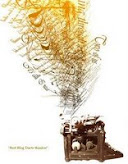And now, on to John James Audubon...
For John James Audubon, painting began as a hobby. His major interest was studying birds. He was the first person to track the habits of birds by tying string around their ankles. When you go to the zoo, you’ll notice that many of the animals have tags somewhere, maybe clipped to their ears or attached around their legs. Audubon began this.
 While he studied birds he made his living by running a general store in Kentucky. He experienced many successful years before the business failed and he had to close his doors. This led him to commit to his study nature and his paint because he now had the time to lend to his passions.
While he studied birds he made his living by running a general store in Kentucky. He experienced many successful years before the business failed and he had to close his doors. This led him to commit to his study nature and his paint because he now had the time to lend to his passions. In order to paint and draw the birds, Audubon first killed them and arranged each into a natural position. This may seem like a terrible thing but by killing each bird and studying it before drawing, Audubon was able to create pictures that were more realistic than any done before them.
In order to paint and draw the birds, Audubon first killed them and arranged each into a natural position. This may seem like a terrible thing but by killing each bird and studying it before drawing, Audubon was able to create pictures that were more realistic than any done before them. Audubon could not convince anyone in the United States to publish his drawings so he took them to England. His paintings were combined into a book called Birds of America and he became an instant success among the British who were fascinated by Audubon’s pictures of rural America. He even caught the attention of King George IV who made him a fellow of London’s Royal Society and he spoke at a conference that Charles Darwin attended.
Audubon could not convince anyone in the United States to publish his drawings so he took them to England. His paintings were combined into a book called Birds of America and he became an instant success among the British who were fascinated by Audubon’s pictures of rural America. He even caught the attention of King George IV who made him a fellow of London’s Royal Society and he spoke at a conference that Charles Darwin attended.After John James Audubon’s death, the Audubon Society was founded in his honor. The Society now prints the best (in my opinion) nature guides just like Audubon’s Birds of America was the best guide to American birds in its day.
Scattered through this article are copies of Audubon’s original paintings: the Roseate Spoonbill, the White Pelican, and the White Headed Eagle.
Return to main page.








4 comments:
Welcome back! Interesting. Audubon was a little bit known to me, but now I know more!
Very interesting that you should choose Audubon today - We are keeping an eye out for a sparrow hawlk that escaped from the Seabird Sanctuary. He was raised by a boy and is tame. Also is blind in one eye so will not do well on his own especially with all the osprey in this area. He has been seen in our neighborhood - perhaps we will see him.
Peter,
His early life was extremely fascinating but a bit beyond the scope of this post. If you're interested, I suggest looking into it.
Mom,
I guess you didn't spot to escapee or I would have heard about it. Too bad. I hope someone was able to track it down.
Good post.
Post a Comment